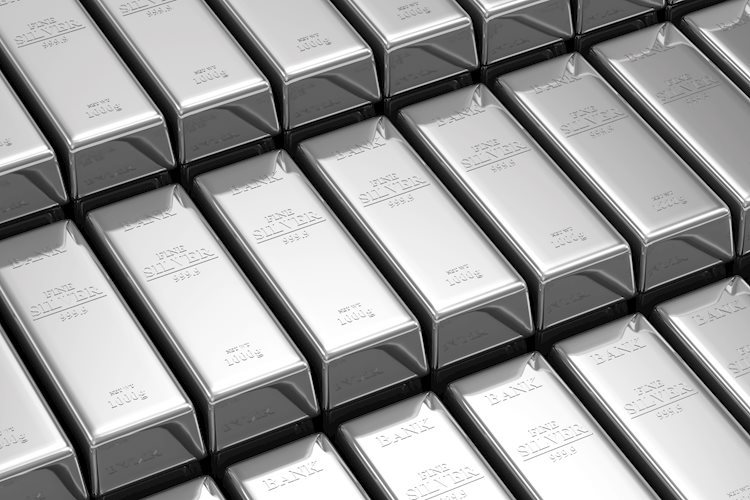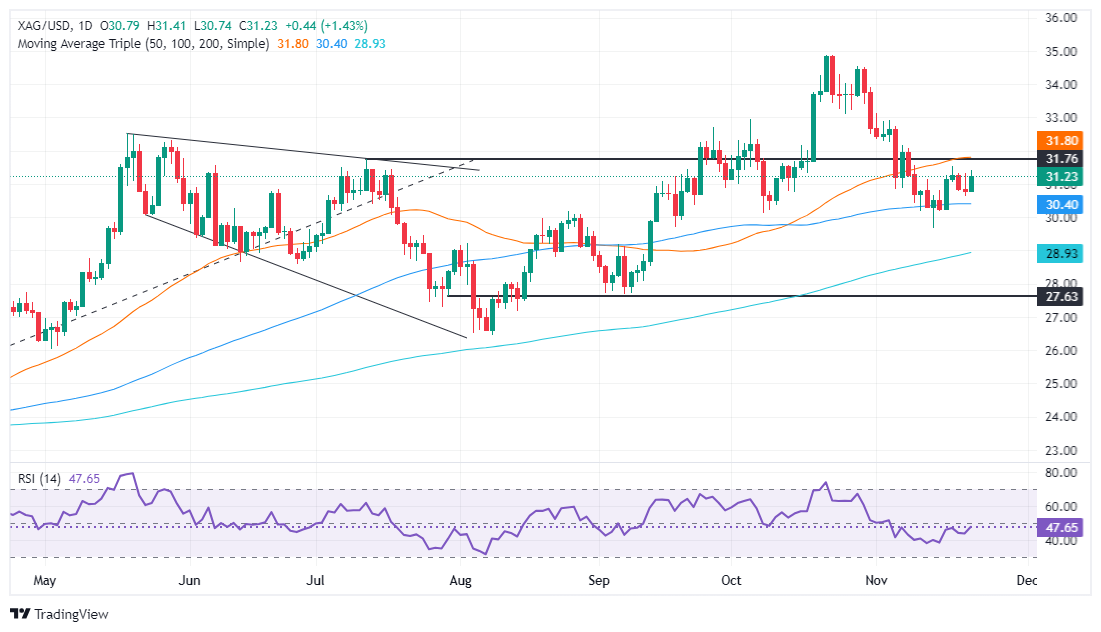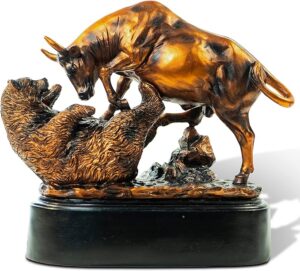
- Silver rebounds to reclaim the $31.00 mark, buoyed by a drop in US Treasury yields and ongoing market dynamics.
- Technical landscape shows resistance at the 50-day SMA of $31.75, with potential targets extending to $32.00 and $33.00.
- Key support levels identified at $31.00 and $30.00, with further downside protection near the November low of $29.68.
Silver price recovered some ground on Friday and reclaimed the $31.00 a troy ounce, boosted by falling US Treasury bond yields and despite a firm US Dollar. At the time of writing, the XAG/USD trades at $31.28, a gain of over 1.62%.
XAG/USD Price Forecast: Technical outlook
The grey metal has consolidated within the $30.50-$31.50 range for the last four days, capped on the upside by the 50-day Simple Moving Average (SMA) at $31.75. If Silver extends its rally above the latter, the $32.00 psychological figure would be up next. Once cleared, further upside is seen, with the $33.00 mark up next, ahead of the October 29 peak at $34.54.
For a bearish continuation, XAG/USD first support would be $31.00. Once surpassed, the next demand zone would be $30.00, followed by the November 14 low of $29.68. On further weakness, the next stop would be the 200-day Simple Moving Average (SMA) at $28.91.
Oscillators such as the Relative Strength Index (RSI) suggest buyers are gathering steam, yet the RSI is still below its neutral line. Hence, the bias is neutral-bullish.
XAG/USD Price Chart – Daily
Silver FAQs
Silver is a precious metal highly traded among investors. It has been historically used as a store of value and a medium of exchange. Although less popular than Gold, traders may turn to Silver to diversify their investment portfolio, for its intrinsic value or as a potential hedge during high-inflation periods. Investors can buy physical Silver, in coins or in bars, or trade it through vehicles such as Exchange Traded Funds, which track its price on international markets.
Silver prices can move due to a wide range of factors. Geopolitical instability or fears of a deep recession can make Silver price escalate due to its safe-haven status, although to a lesser extent than Gold’s. As a yieldless asset, Silver tends to rise with lower interest rates. Its moves also depend on how the US Dollar (USD) behaves as the asset is priced in dollars (XAG/USD). A strong Dollar tends to keep the price of Silver at bay, whereas a weaker Dollar is likely to propel prices up. Other factors such as investment demand, mining supply – Silver is much more abundant than Gold – and recycling rates can also affect prices.
Silver is widely used in industry, particularly in sectors such as electronics or solar energy, as it has one of the highest electric conductivity of all metals – more than Copper and Gold. A surge in demand can increase prices, while a decline tends to lower them. Dynamics in the US, Chinese and Indian economies can also contribute to price swings: for the US and particularly China, their big industrial sectors use Silver in various processes; in India, consumers’ demand for the precious metal for jewellery also plays a key role in setting prices.
Silver prices tend to follow Gold’s moves. When Gold prices rise, Silver typically follows suit, as their status as safe-haven assets is similar. The Gold/Silver ratio, which shows the number of ounces of Silver needed to equal the value of one ounce of Gold, may help to determine the relative valuation between both metals. Some investors may consider a high ratio as an indicator that Silver is undervalued, or Gold is overvalued. On the contrary, a low ratio might suggest that Gold is undervalued relative to Silver.




